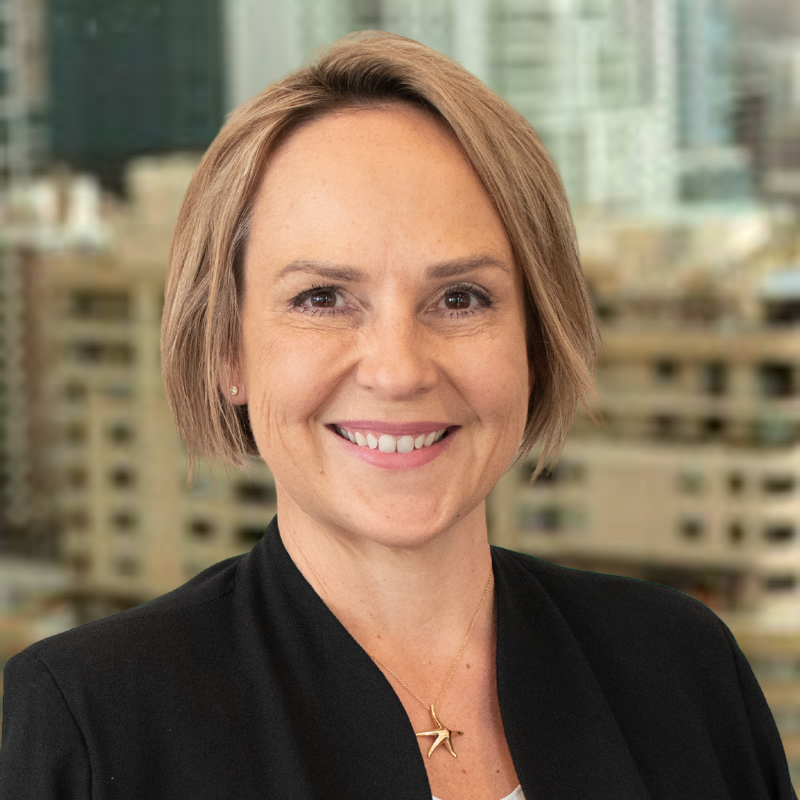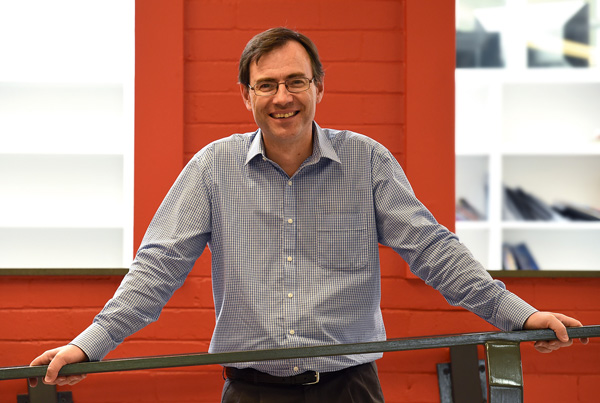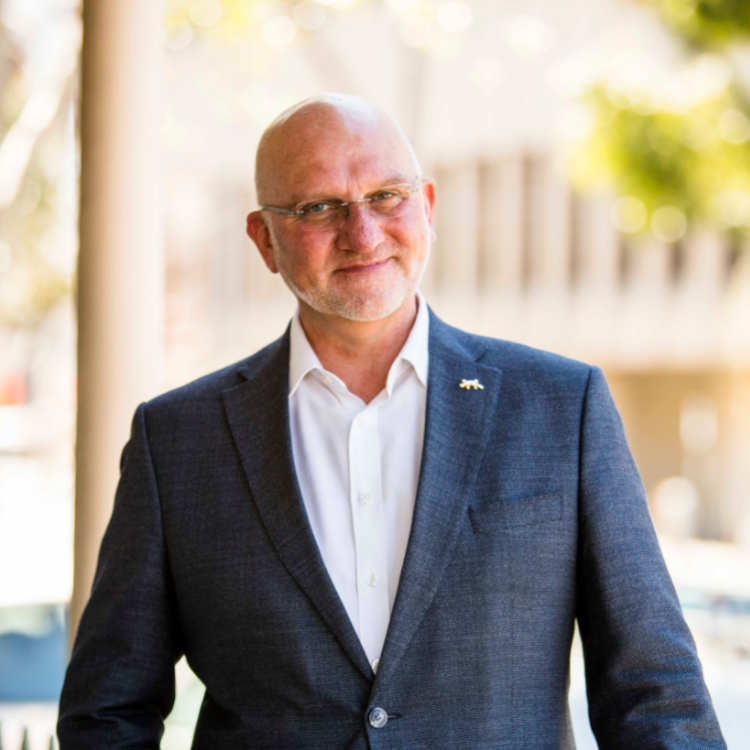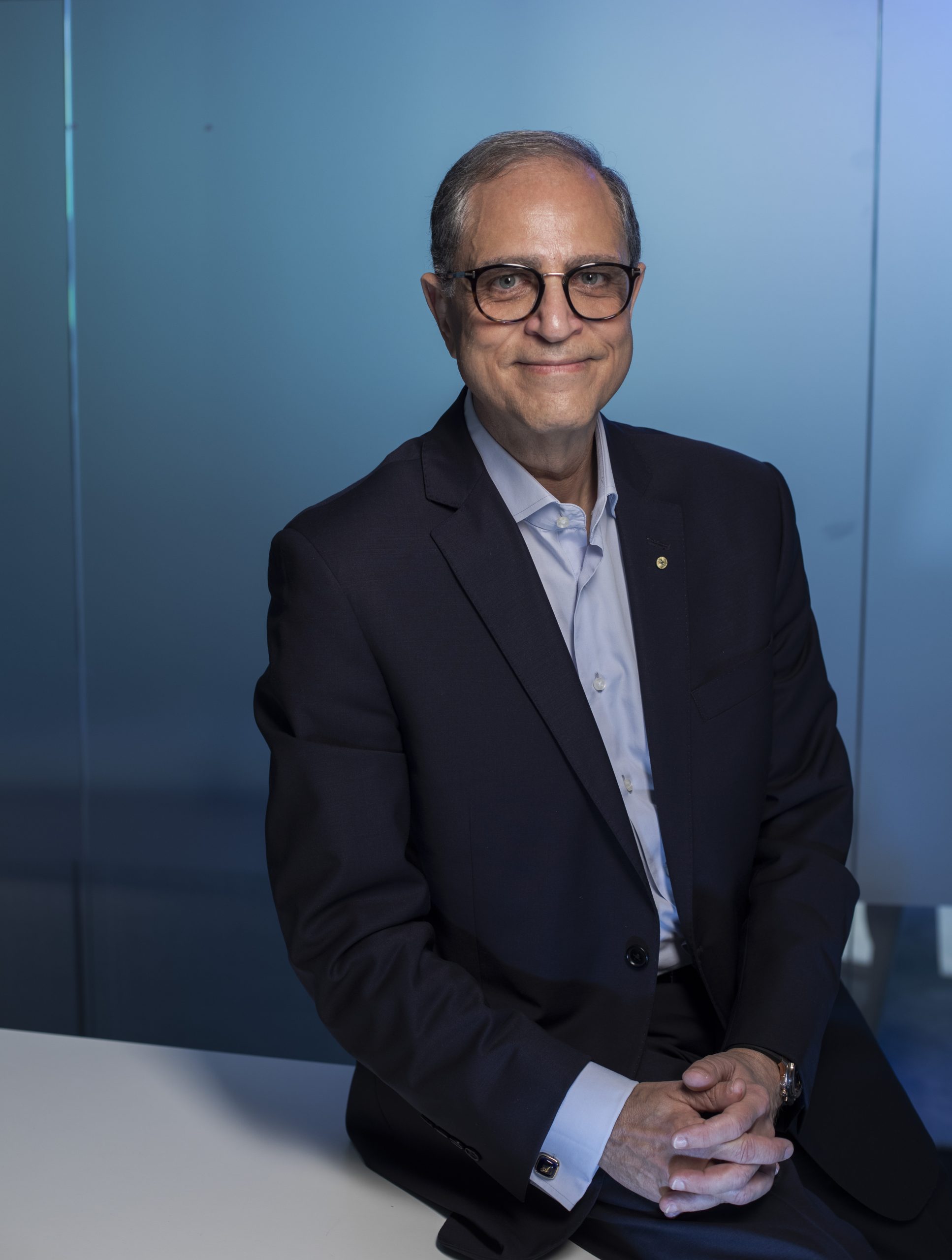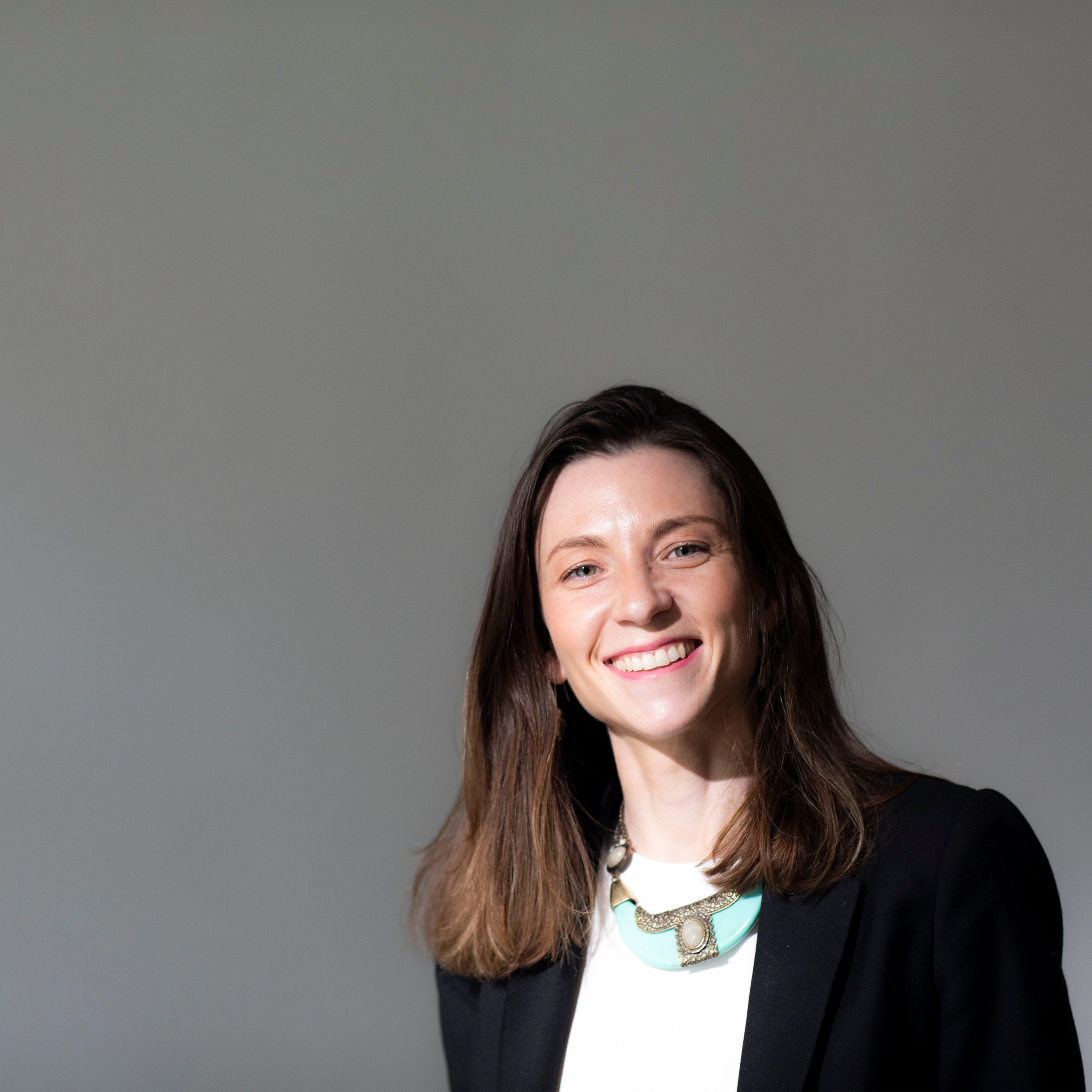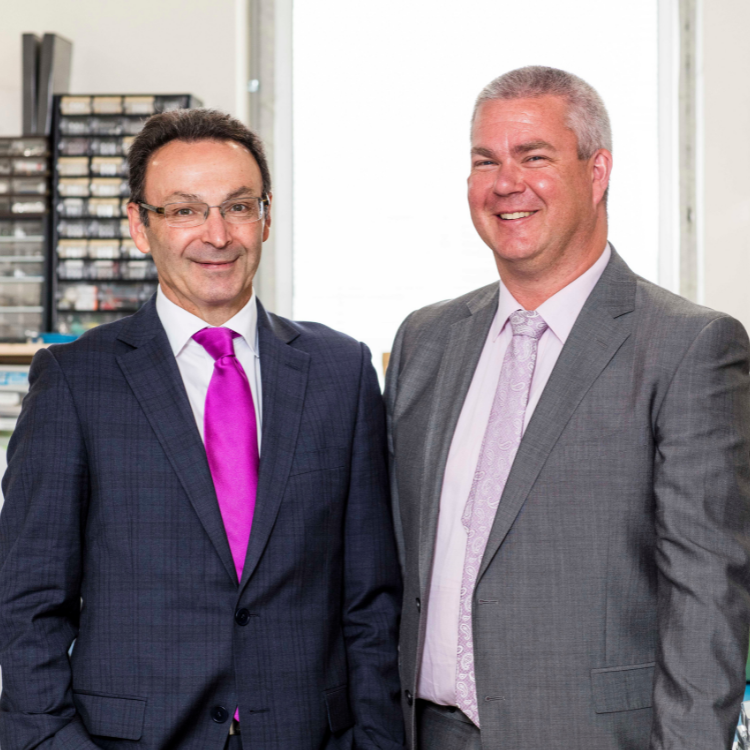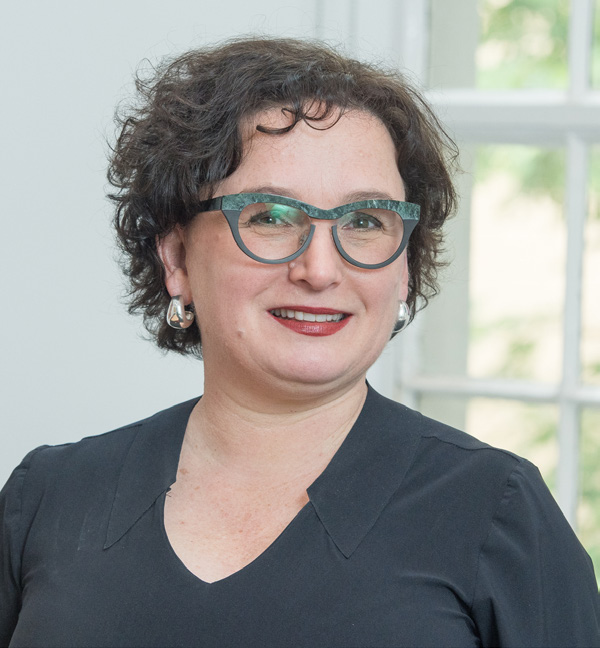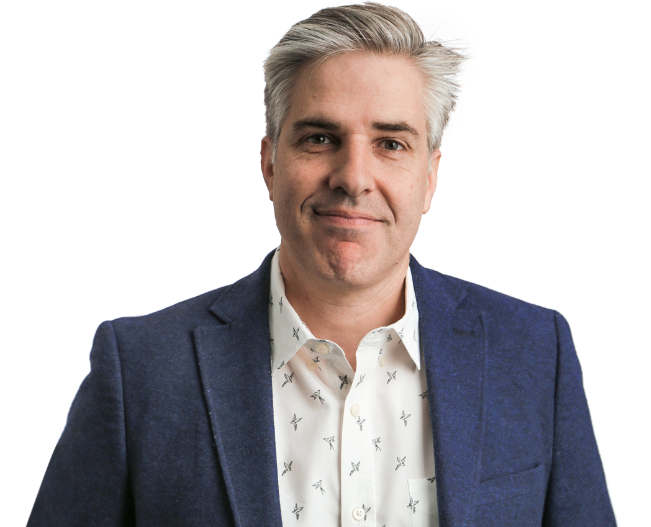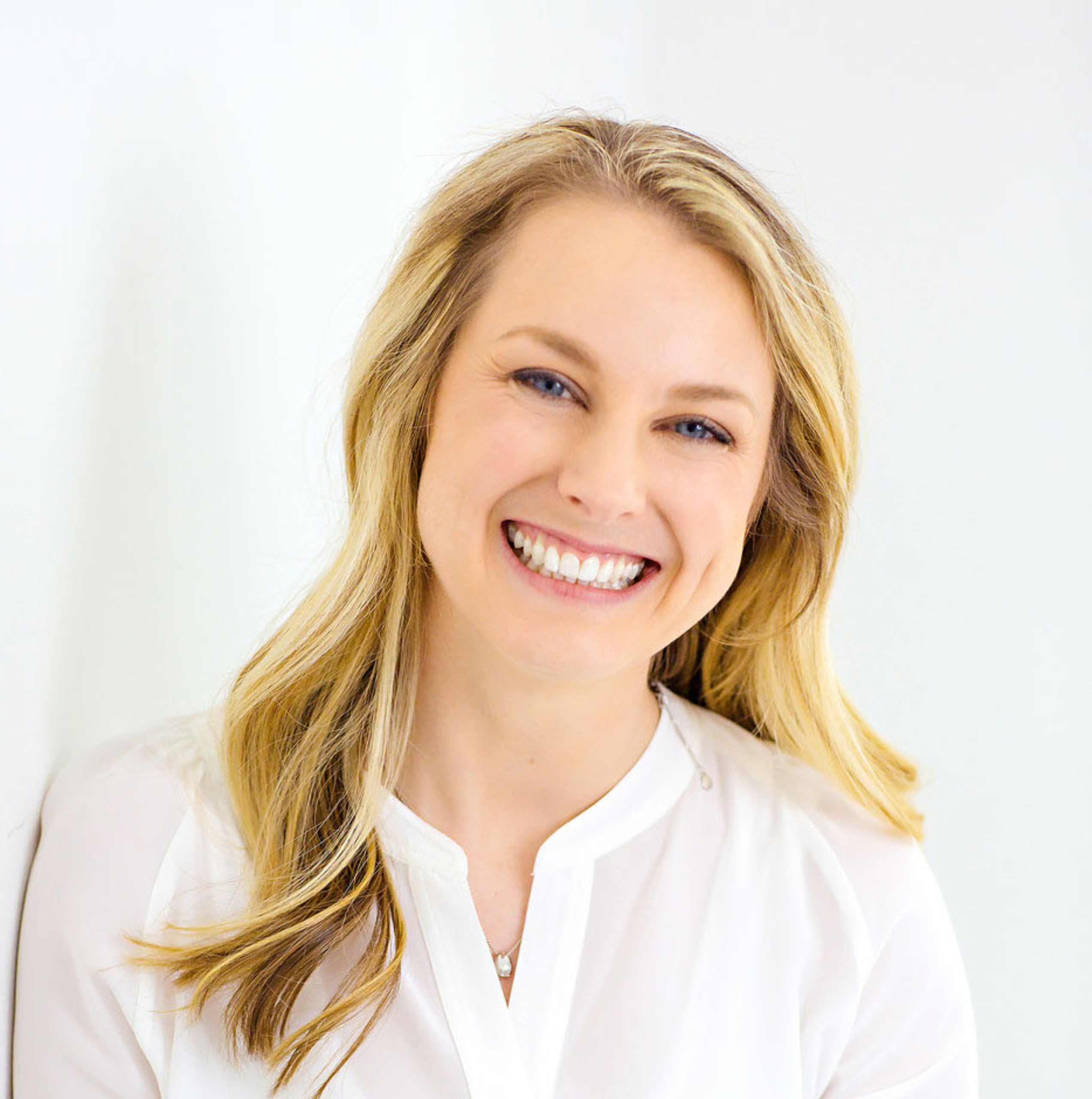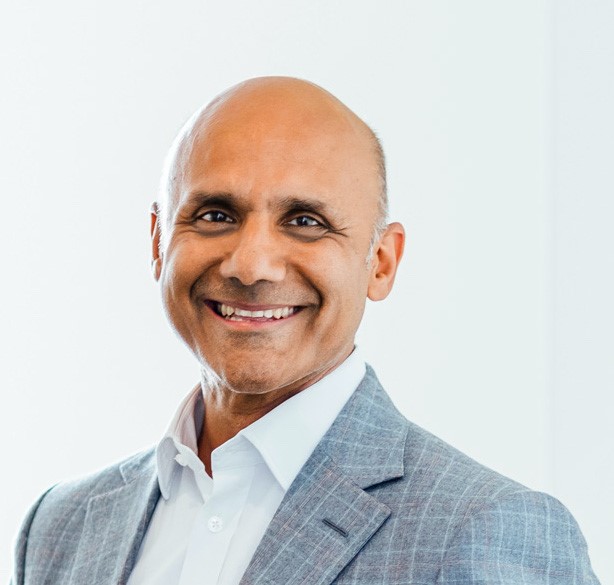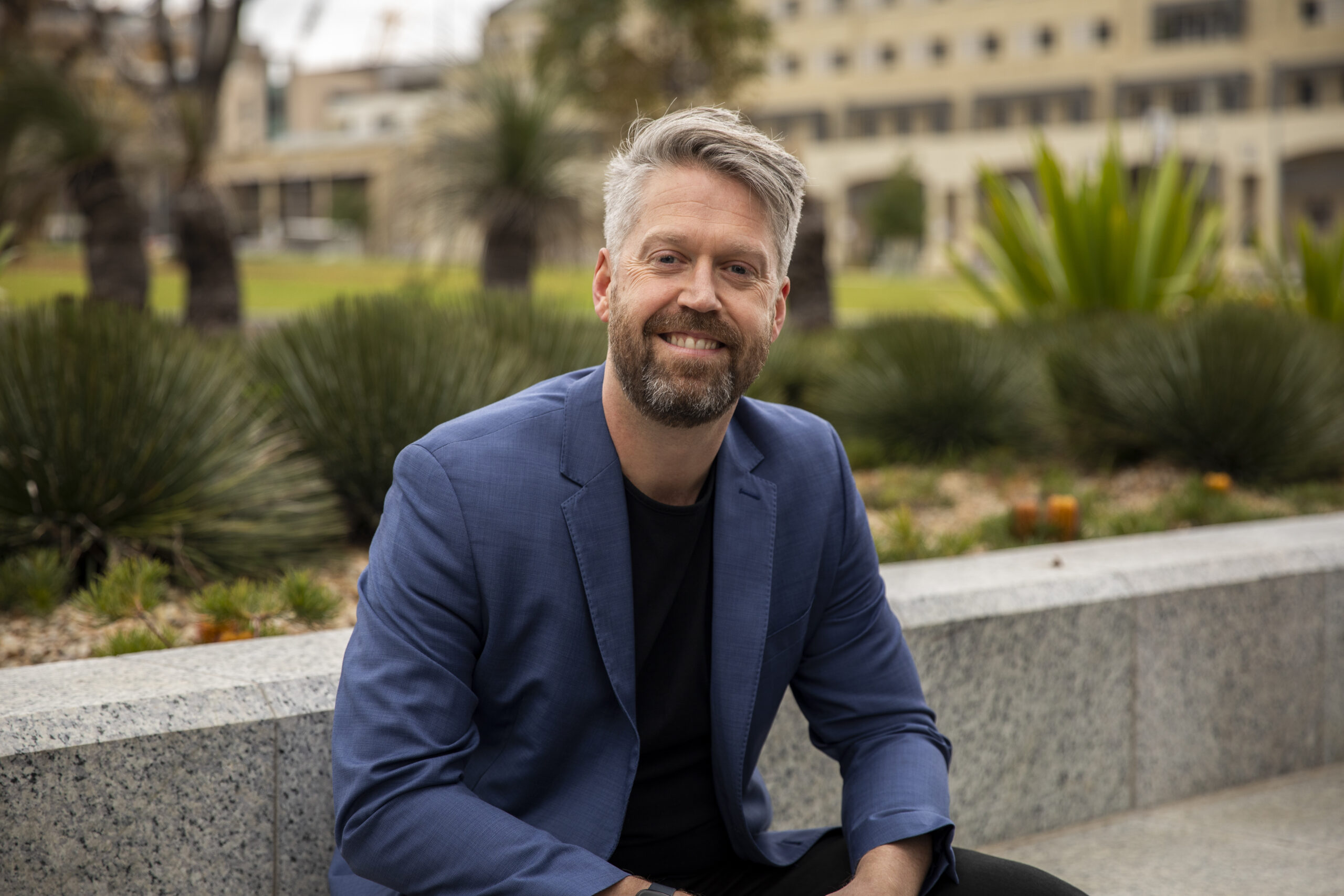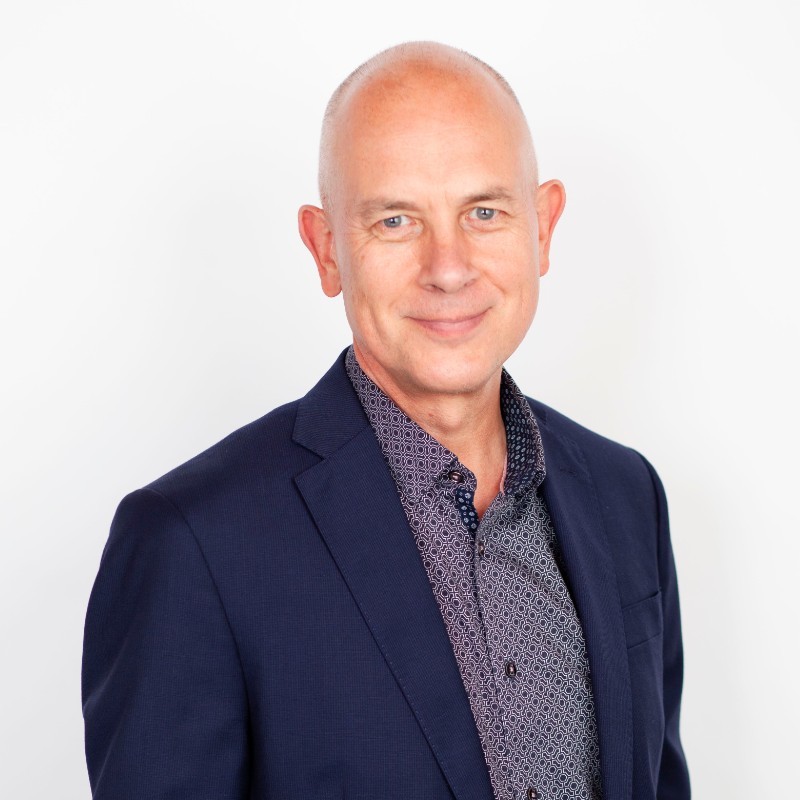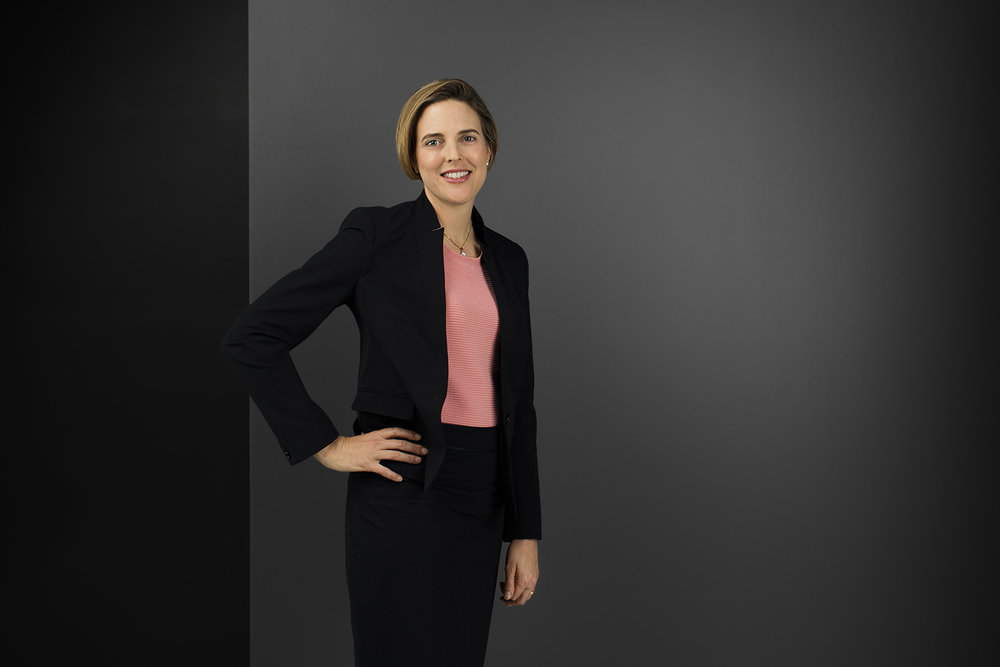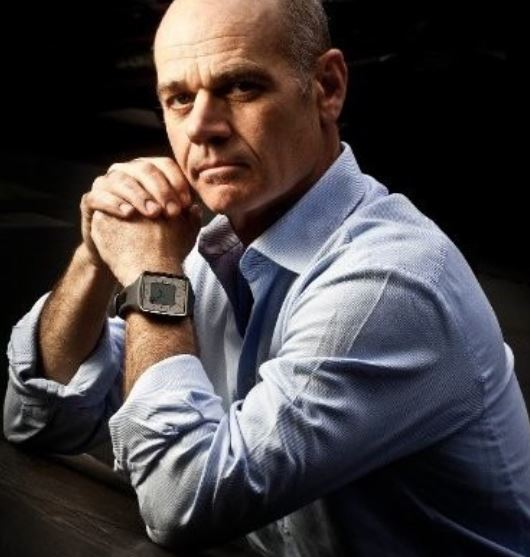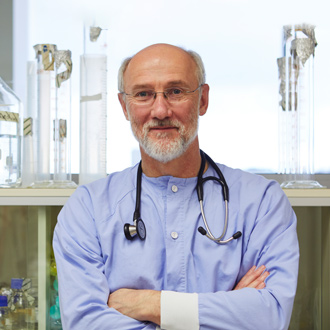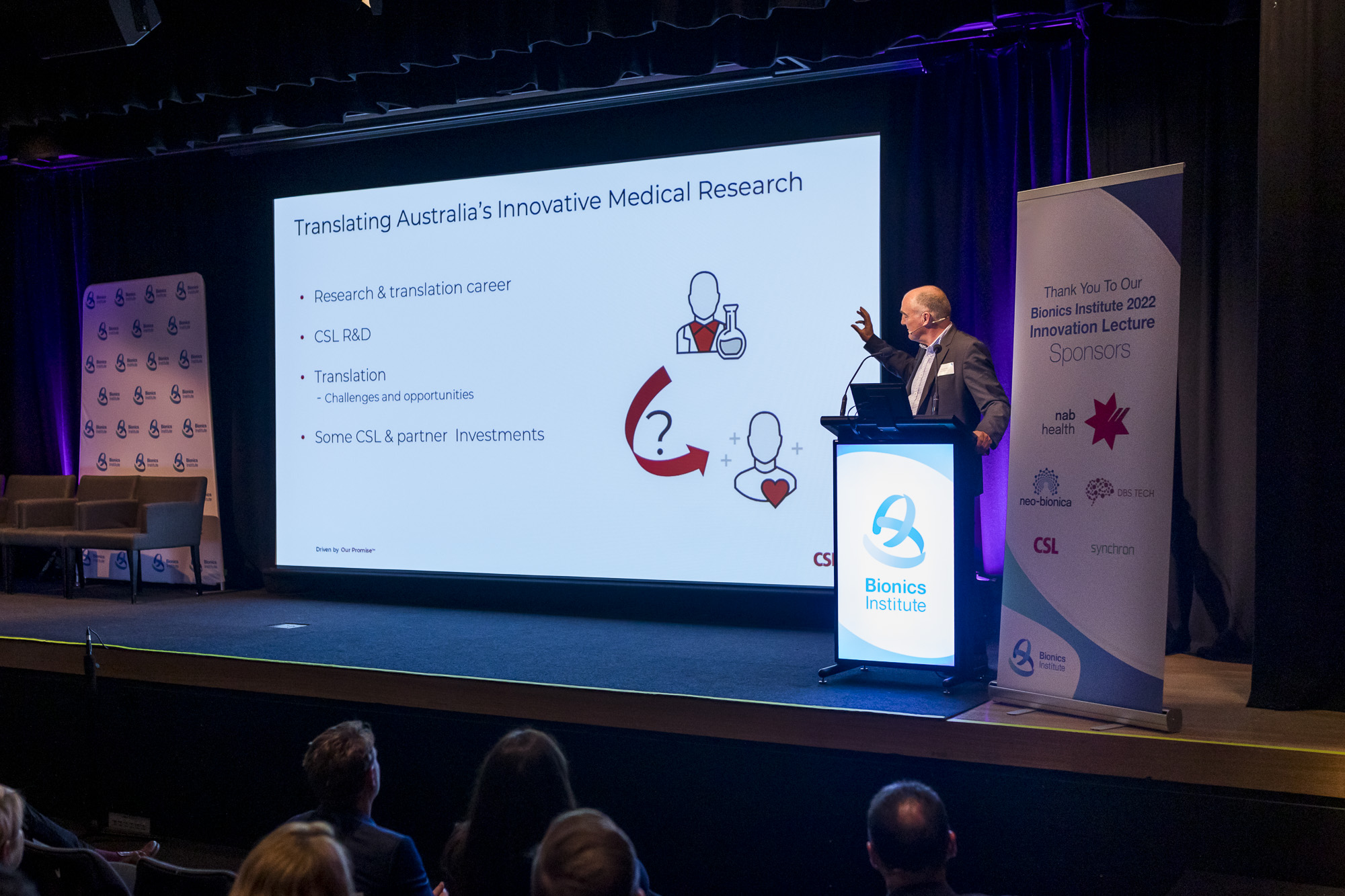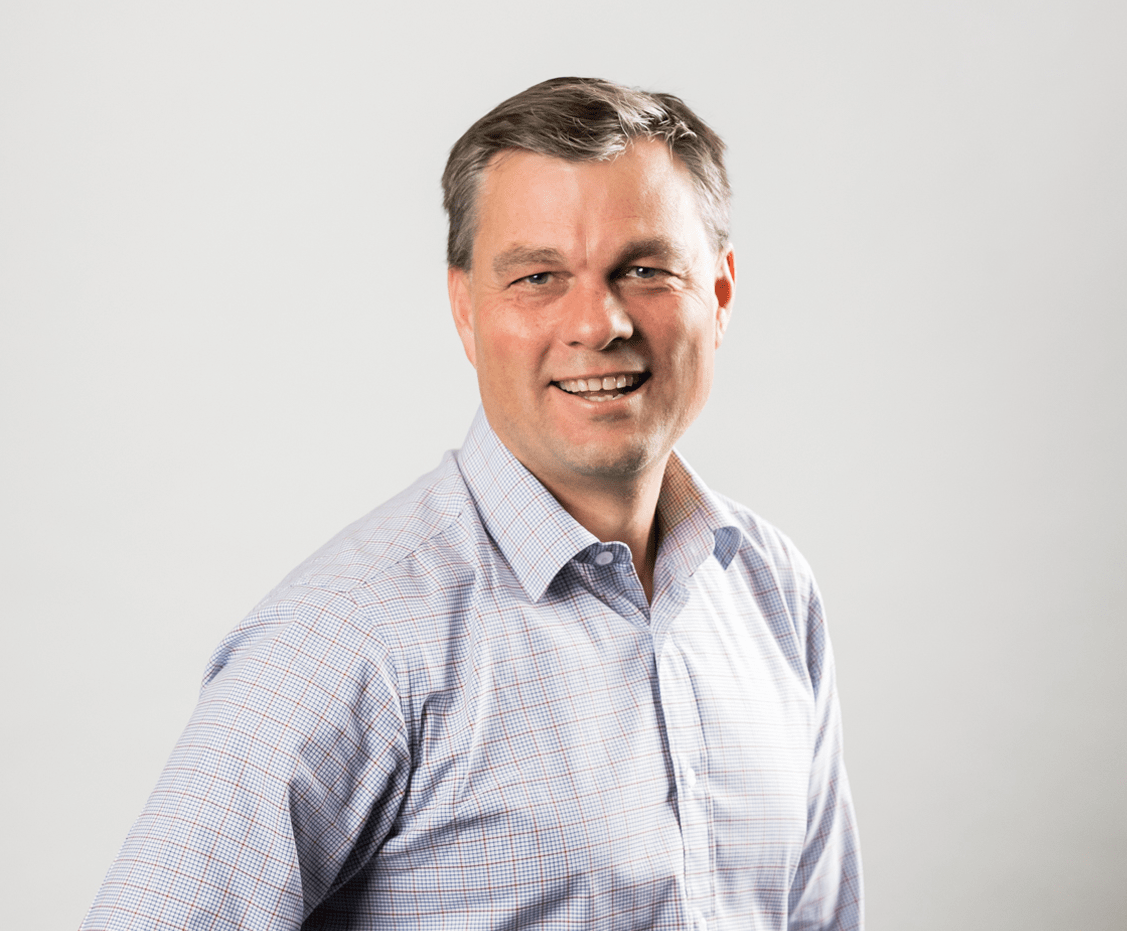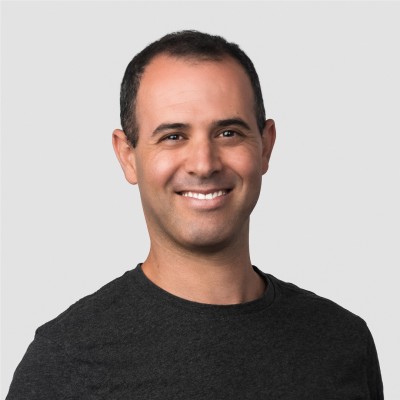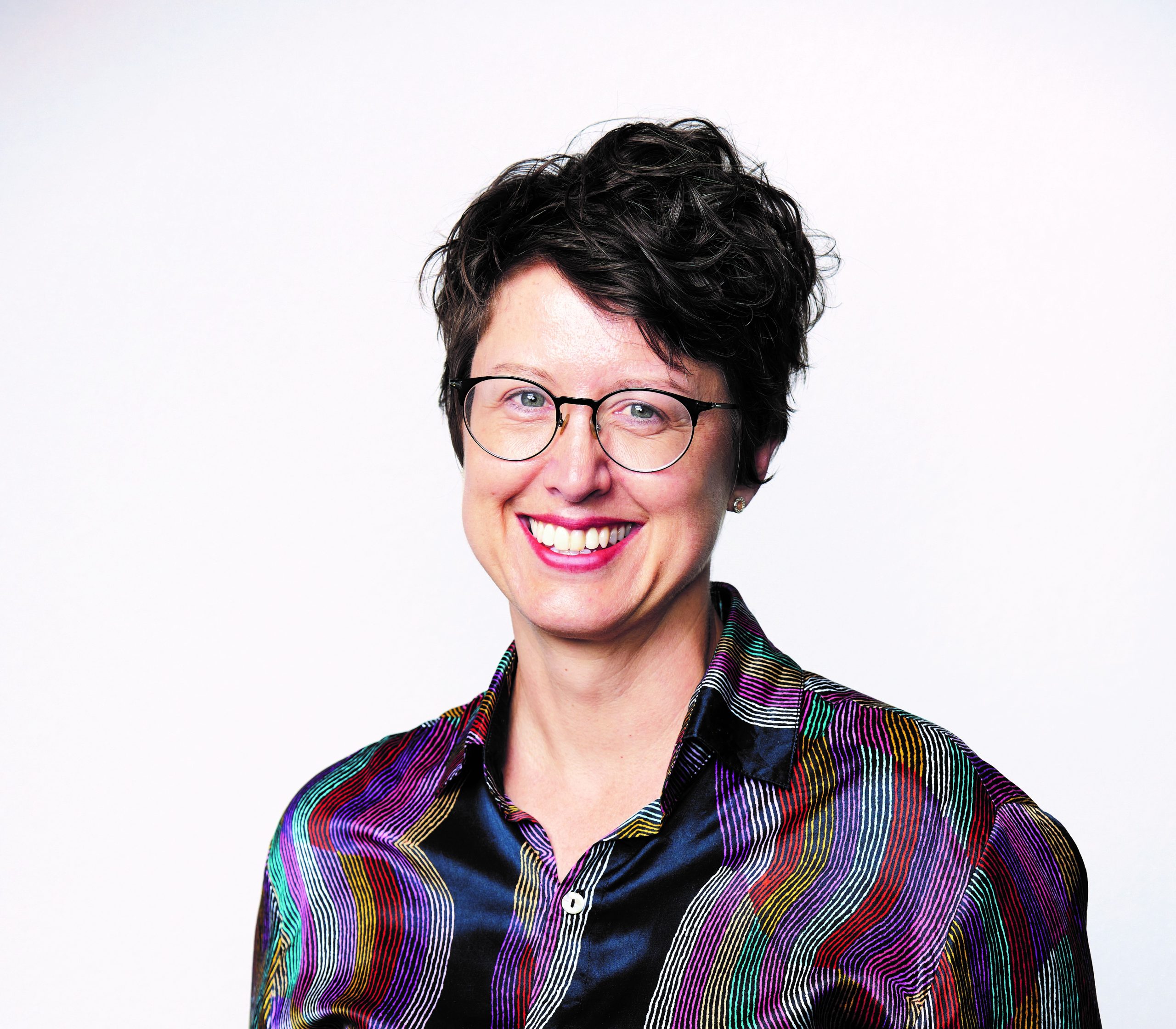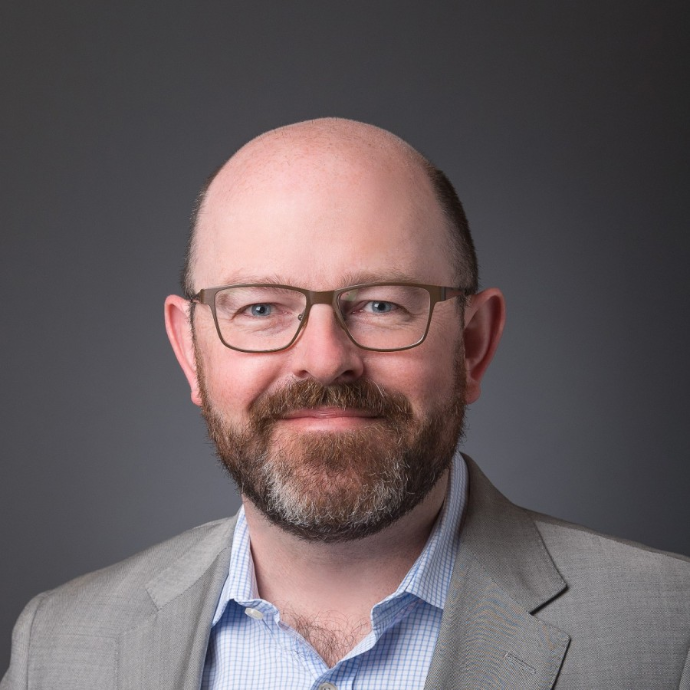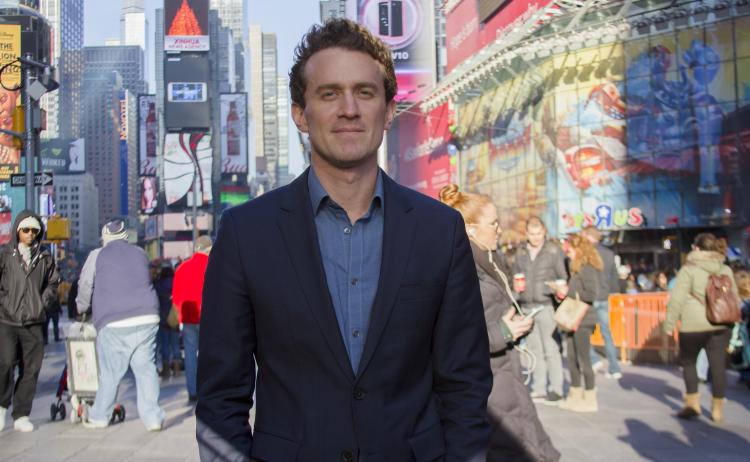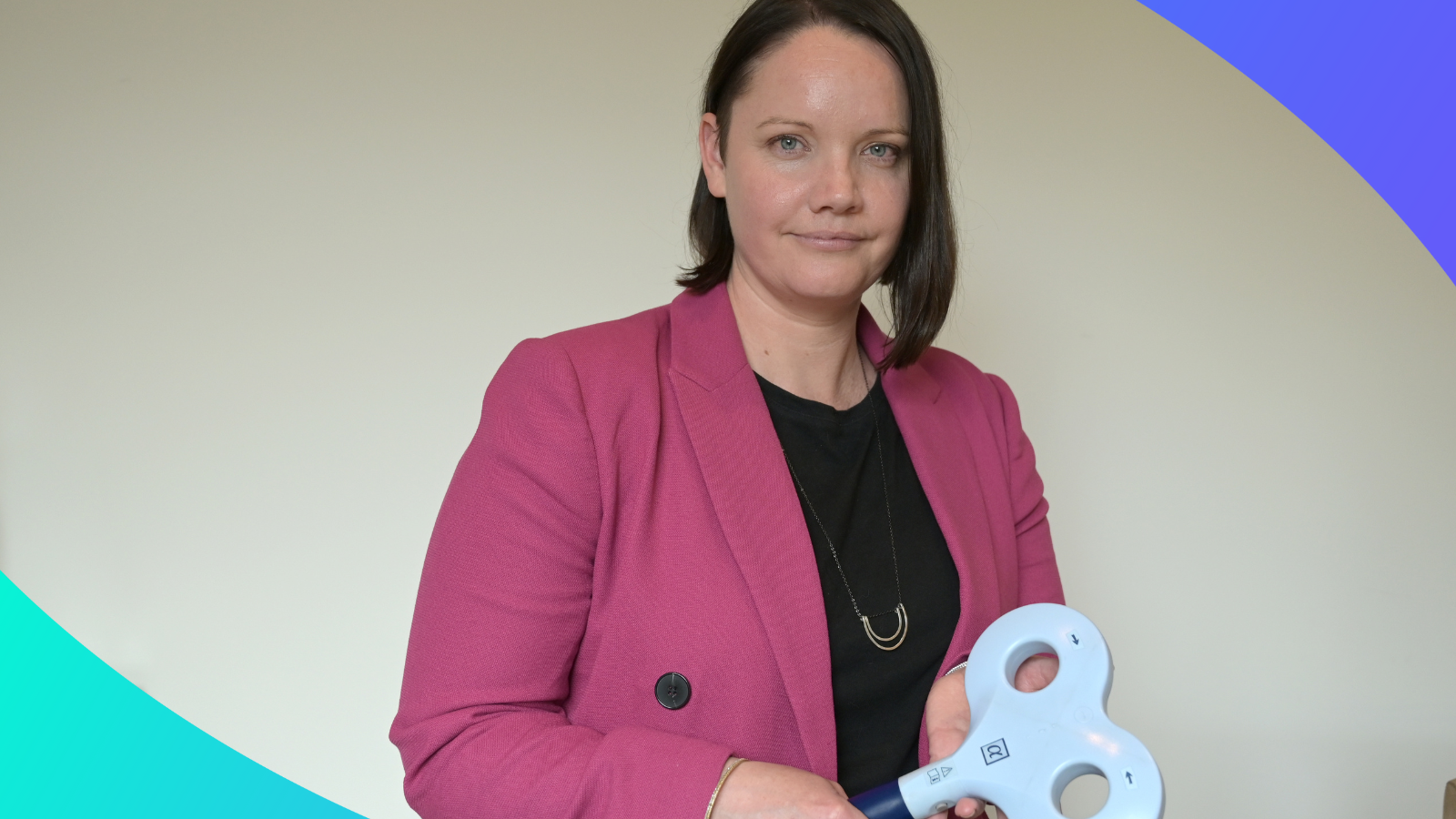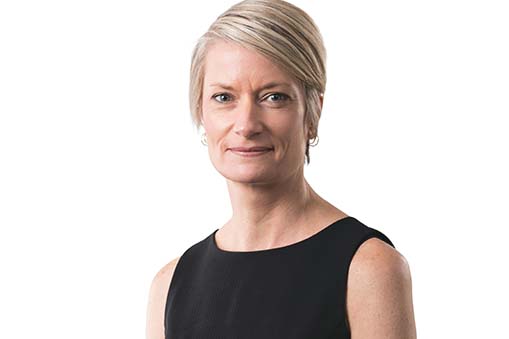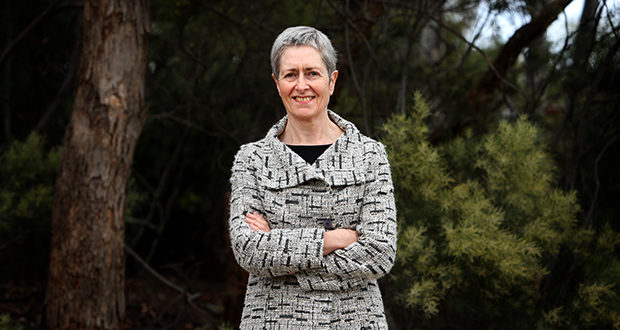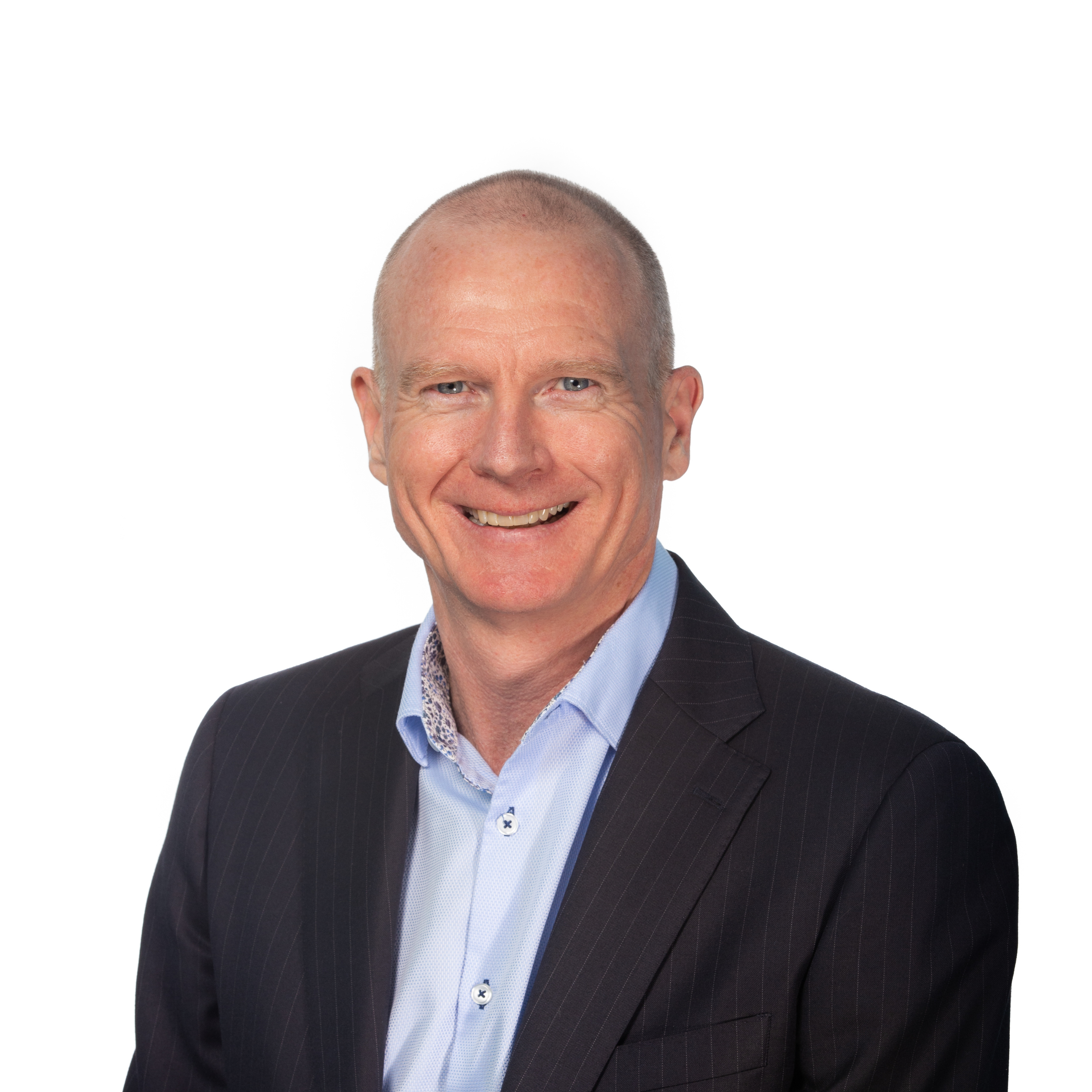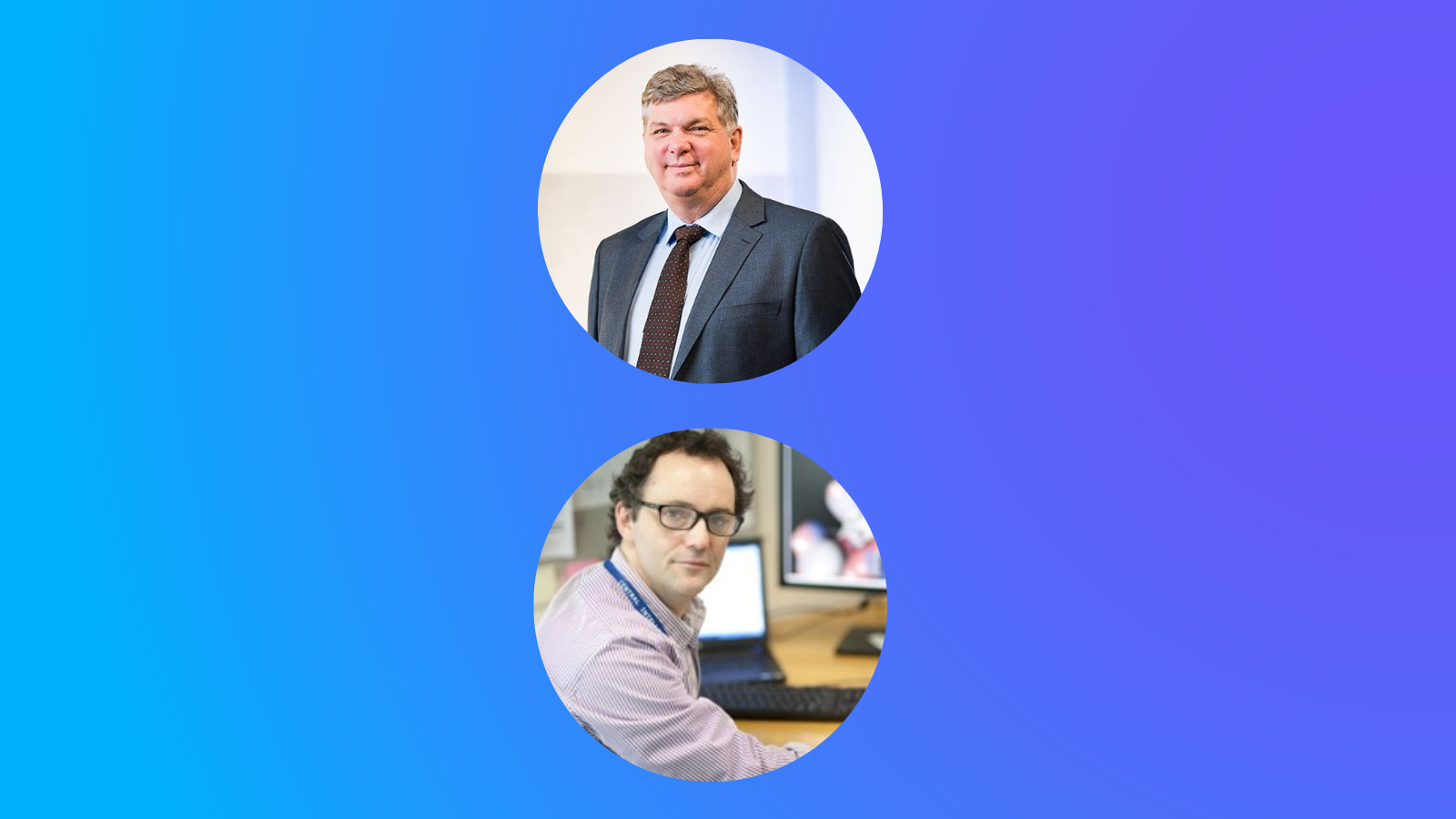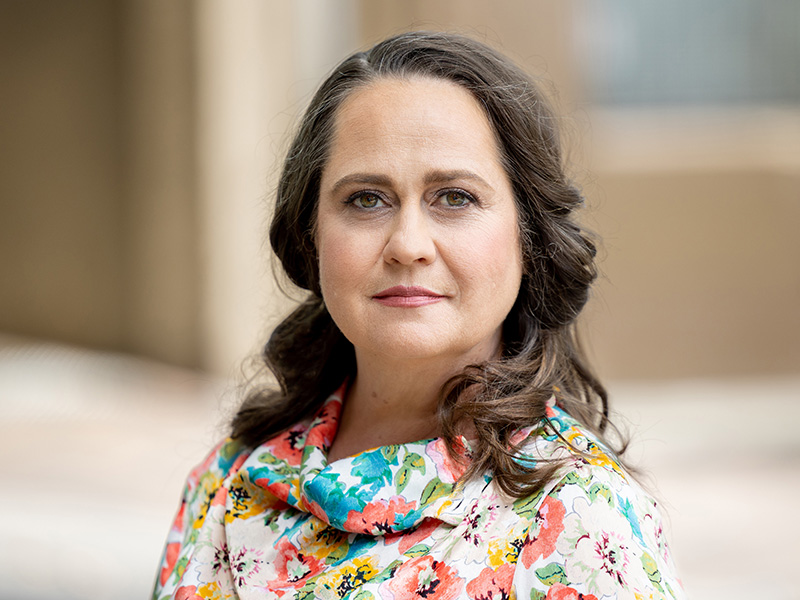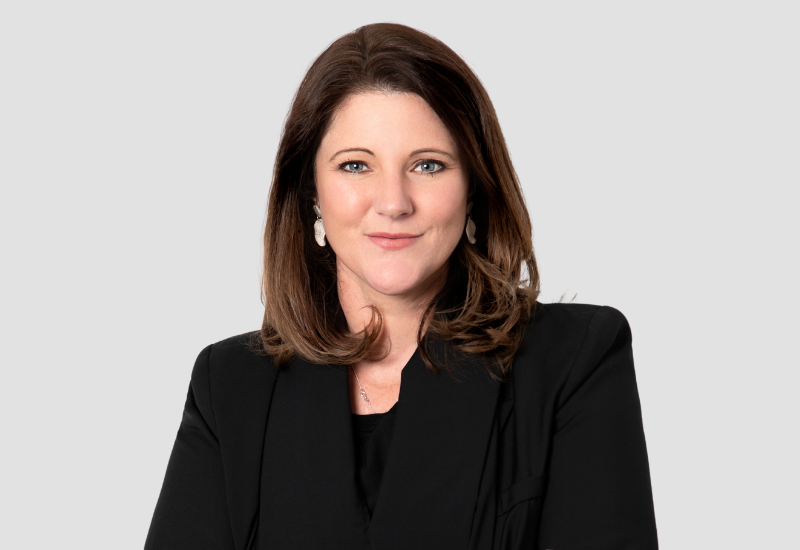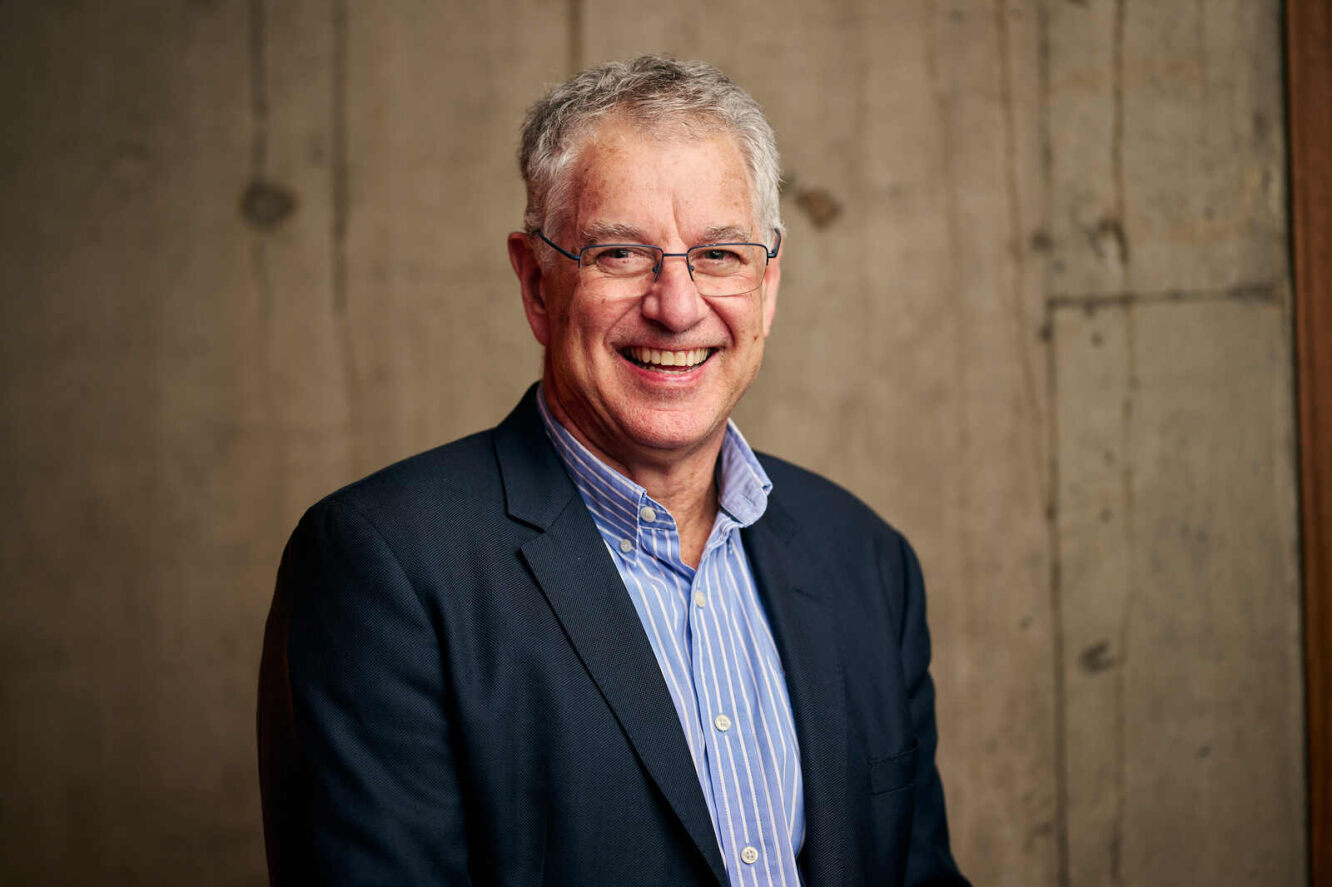Med Tech Talks
The highs and lows of med tech entrepreneurship with Professor Andrew Wilks and Dr Chris Burns
Professor Wilks and Dr Burns are two research leaders who were involved in the incredible breakthrough of the drug, Momelotinib, which has emerged as a treatment for myelofibrosis – a rare type of bone marrow cancer.
In this episode you will hear about:
More information:
Learn more about Professor Andrew Wilks
Professor Andrew Wilks [00:01:23] Thank you.
Dr Chris Burns [00:01:24] Thank you.
Robert Klupacs [00:01:25] Firstly, gentlemen, I know you must be very proud that the molecule you discovered is now on the cusp of FDA registration. Let’s cut straight to the chase. Can you detail for our listeners what momelotinib is? Andrew, I’ll start with you.
Professor Andrew Wilks [00:01:42] Okay, so momelotinib is a small molecule inhibitor of to check enzymes. And the arc of this story really goes back to when I was a child at the Ludwig Institute, and it’s now about to be approved by the FDA for myelofibrosis. So a very severe neoplasm of the bone marrow. And it’s a molecule. It’s Chris in our story, although there’s a whole team of people, as is maybe 50 people in all, it’s an all Aussie molecule. I think it’s true to say that it’s the first molecule that’s been discovered in an Australian biotech that’s actually approvable by the FDA. So I mean, it’s a quite contentious statement and I’m so happy to joust with people about that. But it’s, I think quite, quite a rare molecule. And, you know, the story goes back from the very early days of the discovery of the JAK kinase is all the way through to hopefully the successful approval by the FDA. So just on a sort of minor detail that it wasn’t discovered, it was invented. The molecule didn’t exist until Chris drew out a piece of paper. He was telling me, as it were coming in today of how he actually found that original document, the actual drawing of the molecule, and unfortunately had to give it to Gillian when.
Robert Klupacs [00:03:03] Oh, really.
Professor Andrew Wilks [00:03:04] So that story, but.
Dr Chris Burns [00:03:05] I will tell it later on. Yeah.
Professor Andrew Wilks [00:03:07] So I mean there are all these touch points of individual sort of scientific contribution of ourselves and our teams and yeah, it’s, it’s, it’s quite, quite a moment for us.
Robert Klupacs [00:03:22] Just to follow that up before us and with Chris. And so I’ve known Andrew for a very long time and I knew you when you were working on the Jet kinases, but how did you and Chris actually come to start working together, which led to that drawing?
Professor Andrew Wilks [00:03:33] Well, Chris might tell a different story, but, um, so I’m a biologist. I’m not a chemist by any stretch of the imagination. And I’d started a startup and I was talking to a colleague of mine, Paul Aylward, saying, I need a chemist, a medicinal chemist. And he said, Oh, I know this guy, Chris Burns. He’s a good guy. You get on with him. And so I think we met in Sydney.
Dr Chris Burns [00:03:59] We did yeah
Professor Andrew Wilks [00:04:00] Went upstairs to your office and hit it off immediately. Socially. I mean, there’s all sorts of commonalities in the things that we like, but it’s one of those, from my point of view. Yeah. Sort of momentous moments in a career where you meet somebody who is, you know, a complete, complete you, if you like, in, in, in your science. And as a biologist, having a chemist like Chris was a pretty big moment for me.
Robert Klupacs [00:04:27] Oh, fantastic. I never heard that story, you two. Well, I’ve always known you to be the odd couple looking at you two together. You just look exactly the same. You just look to people, you know. You know you much better together.
Professor Andrew Wilks [00:04:41] So first of all, famously, you know, having left Cytopia, you know, Chris carried on the program as head of research and development and then Cytopia himself, went to work at Wheat High. And as you can see from my CV, CV I’m a fellow at Weekly and I show up on day and Chris things I can’t get rid of it, but what do I done to deserve this?
Dr Chris Burns [00:05:04] You know.
Robert Klupacs [00:05:04] But I know that feel like, yeah, I’ll move.
Dr Chris Burns [00:05:06] On. Yeah, sure.
Robert Klupacs [00:05:07] So it’s a follow up question. So, Chris, you know, as you said and just outline, you came together, you drew this concept on a bit of paper. When was the eureka moment when you realised that you might actually have a drug that could do something for this terrible disease? Myelofibrosis. And is my memory at the time when I first heard about the drug and what you guys are working on. My life prioritised. This wasn’t the indication it was pancreatic cancer and potentially glioblastoma.
Dr Chris Burns [00:05:34] Correct. Yeah. So it’s obviously it wasn’t a straight line from Andrew discovering the tracks to getting to my melatonin. You know, the process of invention is, as Andrew rightly says, was a twisted path indeed. And, and when we first started out on the program, we were thinking that an inhibitor of the Jak Kinison’s Colonises JAK one and Chick two in particular would have potential in both inflammatory disease, immune disease and cancer. And we were working with some academic researchers locally. It wasn’t pancreatic. It was prostate cancer, I think. And so we actually optimised a series of molecules to work against prostate cancer and had some nice data in animal models and then actually thought actually this why this is working might work in glioma and had a look at glioma. We eventually as we followed that path, we realised that that wasn’t a JAK inhibitor at all. And in fact we optimised that molecule called Flexible and it went into the clinic for glioma and had some success but ultimately wasn’t developed further. But to answer your real question, Robert, when we eventually discovered what became known as melatonin that was originally called CYT387. We took it into the into patients with myelofibrosis. And very quickly we were getting data back that there were patients who had been bedridden for pretty much four or five years who were on the drug within a month. They were feeling so much better. They were back up back about living their life. You know, some of these people are older patients, so retired. But we’ve got stories of people who were out playing tennis again, know back at work, doing their normal living, their normal life. And it was that point that we thought, wow, we’re on to something really special here.
Professor Andrew Wilks [00:07:33] I don’t know if it’s an apocryphal story, but I think it was Greg Smith said there was a slide set that he saw from one of the clinicians and patient in the first slide was lying in bed with a spleen the size of Tasmania, clearly at death’s door, and then took our drug and then the next picture of his and playing the back end of tennis.
Robert Klupacs [00:07:51] Wow.
Professor Andrew Wilks [00:07:52] I don’t know if that’s true. It sounds amazing. And certainly I like saying the story because it’s kind of the reason why we do all this. But you know, it’s a transformational molecule. And for this disease and for other diseases, it will be rolled out. In other indications, it certainly changes people’s lives.
Robert Klupacs [00:08:12] Yeah, I’m going to come to it. Come back to that in a minute. But just picking that up now. So at the time you guys had form. So topiary, I think in 2022.
Dr Chris Burns [00:08:21] Know.
Professor Andrew Wilks [00:08:22] It started in.
Robert Klupacs [00:08:24] 1998 listed on the stock exchange.
Professor Andrew Wilks [00:08:27] 2020 for, you.
Dr Chris Burns [00:08:30] Know.
Robert Klupacs [00:08:31] 2020.
Professor Andrew Wilks [00:08:32] Only one of us has a decent memory of this in 2004.
Robert Klupacs [00:08:35] So when you were getting so so type, it was listed company for A-listers. It had this drug candidate. You that moment you spoke about where you started to get an patients with this disease. When was that data coming through?
Dr Chris Burns [00:08:49] That wasn’t till at or until 2008, 2008.
Robert Klupacs [00:08:53] We were so type in 2008, 2009.
Professor Andrew Wilks [00:08:56] It was listed on the stock exchange and 2008, as we all remember, as the global financial crisis.
Robert Klupacs [00:09:02] Comes back to be the lock because you’ve just now got you can pretty much see that you’ve got a dramatic drug candidate company owns it. One would assume you were off to the races And what happened?
Professor Andrew Wilks [00:09:13] Well, that’s impossible to raise money. Yeah, on the market. I mean, privately, I can’t imagine how hard it was. It was a bit of a nuclear winter because all the cash disappeared.
Robert Klupacs [00:09:25] You know.
Professor Andrew Wilks [00:09:25] Even on a public market as we were listed, raising funds was practically impossible. And so. It wasn’t quite as bad in the US and we got we got bought by, uh, a Canadian company. I just paid cash for the company and merely funding the program that we’d initiated, demonstrated in phase two trials of the molecule was fantastic. And then we had bought it for half a billion dollars.
Dr Chris Burns [00:09:56] So you missed out the little bit there that we were acquired by the Canadian company for 10 million. I continued on the path that we had.
Robert Klupacs [00:10:06] Deliberately because.
Professor Andrew Wilks [00:10:07] It’s.
Robert Klupacs [00:10:09] A question about the whole process for my listeners to understand that you’re going to have luck plays an enormous role at time and plays enormous.
Professor Andrew Wilks [00:10:16] Wrong things.
Robert Klupacs [00:10:16] Everything. Because that means to follow that up, to pick that up so we could take a step back. Even this whole journey. We now talk about an FDA approval of a drug in 2023. I first met Andrew in 1999. He’d been working for ten years to discover and patent the JAK kinase, which has been a whole. So if you think about this journey, Andrew, what goes back to the early eighties?
Professor Andrew Wilks [00:10:38] It actually 1988 was when it started in 1989. I published the first paper and we were young and lovely then, both you and me.
Robert Klupacs [00:10:45] I was never lovely.
Professor Andrew Wilks [00:10:46] Andrew Young at first and yeah, so I mean, you want us to go through this?
Robert Klupacs [00:10:53] I would love this because this is I want to get this recorded because for all we want innovators and inventors and people to understand what the journey really takes. Yours is a real life example of what success can look like and what you have to go through. So I’d love to get this on tape.
Professor Andrew Wilks [00:11:10] Okay, so once upon a time. So when I arrived in Australia in 1983, I came to the Ludwig Institute for Cancer Research and the Ludwig was nesting within the Walter and Eliza Hall and more specifically the Ludwig lab I was in, which was Tony Burgess’s lab was nesting within Don Metcalf, Don Metcalf’s unit, and Don Metcalfe was one of the great iconic medical researchers of Australian. I mean, globally, you know, he he was so famous in Australia, he had a stamp, his own his own postage stamp. For those viewers who don’t remember what a postage stamp got, It used to lick it and put it on an envelope if you don’t know what an envelope. And so long story But but so Don was was a chap who sort of demonstrated that all haemolytic blood cells came from common precursors in the bone marrow and then started to elucidate what the proteins were actually directed that that the development of the red cells and the white cells in them and the T cells and so forth. So when I came into this environment, they were just starting to clone those molecules, those growth factors as haemoglobin growth factors. And my job was to try and find the receptors for them. And so I set about a whole bunch of different approaches, but I hit upon one which involved the polymerase chain reaction now famously a sort of the assay for COVID, but then literally just been invented. And I sort of I decided that, you know, these receptors are going to be enzymes called tyrosine kinase. It’s these are molecules of phosphates on proteins. And that kind of directs all of the signalling within the cell. And so I, I invented this technique and first time the experiment worked and I had this blob of DNA at the bottom of the gentleman. I cloned them all. And so I went through sequencing a whole bunch of them, and some of them were receptors that Geoffrey set to famously and a whole bunch of other things. But there was this class, these two molecules here that were not receptors. And so we can sign them up sort of metaphorically to the rubbish bin by calling them just another kinase, because we had all these other kinase, just another kinase one, just another kinase to Jack one and Jack two. When I published the paper I needed a different justification because that was just a little too ridiculous. But Janus kinase, this is how it justifies. And they had two kinase domains, so they looked like Janus around them and got it always. Anyway, as luck would have it, it turns out that these are not quite the receptors, but they are actually pivotal to the way the sympathetic cells hormones actually direct the traffic, the necessary and necessary part of it. And so I then worked on this Manhattan Project with people who discovered the molecules, which were transcription factors. And then the JAK stat pathway evolved from that. And it became clear going through that that this pathway was central to the whole process. And since normal haemolysis and pathological hemiplegia, so cancer and inflammatory diseases both use this pathway, the inflammatory portion sort of hyperactivity, you know, it became apparent that if you made an inhibitor of these molecules, you would probably get an anti-inflammatory molecule or you probably get an anti cancer molecule. And some of my friends in the US were starting companies famously naming them after themselves. So Chemical Sujan Schlesinger and Oelrich started that. I didn’t go as far as calling Wilks. Chen But you know, we had patents on these kinases, and so we rolled the patents in to the company. Anyway, I went up to Tony Burgess, who was my boss, the director, and said, I want to start a company. And he said, okay, but you can’t stay at the Ludwig. So I had I had to make a choice and I had like 30 people in my lab because we were really cooking with this jack stop pathway. And so I had to make a decision whether I wanted to stay in academia or whether I would leave and start the company. And I got a little bit of seed capital from a Santa Fe investment bank. And so I walked up to Tony, said, I’m leaving. And he said, okay. So I left. And immediately the money fell in a heap and I had nothing. And so we are now about 50 metres from where the company actually started, just along the Lansdown street, two doors away from me. So I just hired this office and sat there trying to get money for the for the company. I sort of left the academic life behind. And fortunately, I got sober about six months between leaving the institute and actually getting the money. So six months where I had no money and I became a professional chess player, which is which is an hilarious aspect of this professional chess player in the sense that I played in the Australian Lightning Chess Championships and came sixth and won $123. And that was the only money that I earned in that period that I’m claiming I was a professional chess player. Dr Chris Burns [00:16:24] And virtue, of course, is this period the been years.
Robert Klupacs [00:16:27] Yes, I can imagine.
Professor Andrew Wilks [00:16:29] But we were I mean, literally penurious. It was really quite a tough time. But I came across a listed venture capital group called Medica Holdings. And it’s worth mentioning the founder of that chap called Kevin Healey, now deceased, unfortunately, but a brilliant, brilliant guy, totally got the idea. And we basically joined forces to start it, start the company. He had access to sort of net networks in the yachting sat around him. So the whole thing then started to, to roll out and become both funded and supported by, by people. And it was then that Chris and I started to get together and the whole thing started to work, but it literally was 50 metres down the road from him. Quite amazing. I have deja vu coming back to them for the place.
Robert Klupacs [00:17:21] That’s absolutely amazing. Absolutely amazing. And then then as we started before, he then had such hope, you up and running got the 2000 night Dot is looking good. He couldn’t raise money so you get sold to the Canadians. Did you guys continue to work for the Canadian company after that? Oh.
Professor Andrew Wilks [00:17:36] I didn’t. I mean, again, so that was I guess the point where I was leaving. Yeah, I would have been six. I was six months before that. And we can say a little bit about what happened after that. But Chris then very much took over running of the of the of the company signs the situation. Yeah.
Robert Klupacs [00:17:58] And so in my understanding is the Canadian company YM and biosolids as bought you guys so type you off the market for $10 million correct. Yeah and two years later I understand that was sold for $540 million.
Dr Chris Burns [00:18:10] Gilead Sciences
Robert Klupacs [00:18:11] And you guys as founders of Cytopia, how did you get rewarded by that sale of volume?
Professor Andrew Wilks [00:18:17] I think I mean, I made a couple of hundred thousand dollars from a situation where the company had been significantly better off than that, I think. You know, I mean, I’m consoling myself with the fact it’s not about the money, but you know.
Robert Klupacs [00:18:33] How well they’ve been to some degree. You know, a lot of founders. I would love you to guys be multimillionaires. But that’s one of the things I want my listeners to understand, that sometimes it’s not the people at the beginning who rape all the benefits. Yeah, but looking at both of you and where your careers have got to and we’ll come to that in a moment, and you’ve created something, as you said, invented in Australia that’s going to lead to huge impact in the world for the next 20 years of people, which when I first came across it, there was no cure for this disease at all. Right? So yeah. Professor Andrew Wilks [00:19:01] I mean, it’s massively rewarding. I mean, the science itself has its own sort of intellectual rewards, but I think for me the midlife crisis or the epiphany comes from the fact that the thing that you’ve done scientifically can be applied to humans and to their benefit. And very recently, because we reached out to the clinician who did the final Phase three trial and was then led to my case to patient advocates in the myelofibrosis based and I and we exchanged a couple of emails and stuff and the idea that this person is probably still alive and a grandparent and enjoying life. Actually moved me enormously. I mean, that’s. I think that’s the point in all of this. And if we keep the patient at the centre, all the rest of it falls into place, I think. And that’s very much a post-hoc, it’s a rationalisation of all this but, it is extremely gratifying.
Robert Klupacs [00:20:03] Yeah. Just to switch base a bit, back to you, Chris. So the journey of the drug development where you obviously you went with from subtype here to Y in phase two studies, but just take this for our listeners. What was the pathway? I mean, what were the results? How long is it taken to get from when you guys first drew up the molecule to get it made, to get it tested to where it is today, and what had to be done to get it to the point on the cusp of FDA approval?
Dr Chris Burns [00:20:31] We first, I think, made the compound probably in around 2005 is my recollection, as part of a very active program at our labs, which were then at the Baker Institute, which is I think when we first crossed paths from it. And as Andrew said, know Andrew’s a biologist by training. He had he had created our and we had created that at CY Topia. And I do want to acknowledge all the team that was involved, but a really robust series of of assays and test systems that any molecule the chemists made had to go through before we actually felt that was a competitive interest. And we were really inspired by a paper that came out in 2005 that, that identified a particular mutation in the Jak kinase as being a driver mutation for these myeloid proliferative neoplasms of which more or less our process is one. And so we were actively working to develop potent and selective inhibitors of, of Jak to and JAK one as well, and we’d put them through this battery of tests and more often than not they failed. But using that information we went back and we designed newer molecules and we were working with academic researchers and other people in, in Australia to kind of help design this molecule and see what 3879 melatonin, as it is now, was one of those compounds and it went through all those battery of tests and it got to take every time. And we kept on thinking, Oh, well, that’s good, but you know, let’s keep on trying to make a better molecule. And we kept on making molecules, but no molecule went through all the tests with the tick, except it’s very active. So at that point, we knew it was a pretty impressive and a unique kind of compound. We then did all that process that you have to do before you take a drug into the clinic. We had to scale up the synthesis. We had to develop a formulation that patients could take as a as a capsule. We had to patent the molecule, we had to do all that kind of stuff. And then we started the clinical trial. And as I said, you know, we as soon as we saw data, we knew it was something special. I then did move to Iron Bar Sciences after we were acquired, and we just continued with that, that process. And really William did a great job. They raised money, they continued the clinical work, but they didn’t really change much. We were looking at some other opportunities for a lot of outside of myelofibrosis, but that was the main focus. Then the drug was acquired by Gilead. I actually had a role with Gilead, a part time role for a year to help with that transition, and we continued to bolt on additional findings around that molecule. So we discovered that it not only inhibited check one, check two, it inhibited another kinase. And that was kind of the secret part of the molecule that we hadn’t appreciated early on that was giving it not only the potent activity in myelofibrosis, but also gave it very beneficial activity with respect to anaemia. And I can go into that that separately that basically the molecule had these wonderful properties in patients because it because of this unique combination of activities. And then Gilead, I stepped back from Gilead, but Gilead continued to, to work on the compound I did to improve the synthesis. I improved the formulation, I refreshed the intellectual property that we had followed in 2007 with some better salt forms. And, you know, the kind of things that Big pharma does really well and I guess of watched then to the last few years from the sidelines as the clinical data’s been reported and developed and you know it’s been just one piece of good news after the next actually with respect to the data coming out of the clinic.
Professor Andrew Wilks [00:24:33] There was a bit of a misstep in there. So Gilead put the wrong scoring function essentially into the clinical trial and the making this a combination scoring function that made it difficult to see efficacy because it was balanced by a slightly poorer response in some of the neurological and in indices. But what happened then is Gilead sold it to Sierra Oncology and some of the same team came back into Sierra Oncology and then pushed it forward correctly. And it shines. I mean, when when the scoring function is.
Dr Chris Burns [00:25:12] Yeah, when you do the right trial.
Professor Andrew Wilks [00:25:14] Sort of shines as a drug. And you know, that’s why, that’s why GSK bought it for a couple of billion dollars.
Robert Klupacs [00:25:22] But as you say, you’ve got a great drug. You know, it’s working. But the clinical trial design nearly killed it, Correct?
Professor Andrew Wilks [00:25:30] There are so many of this. This is the amazing thing about. So that journey is quite tortuous and there are many steps and there’ve been some missteps along the way. And, you know, the history is full of drugs that have been saved from the rubbish bin because of people, you know, evangelists who believe in the molecule. And Gleevec famously was saved by Alex Matter, who was the head of Novartis Clinical. And this molecule has been saved on a number of occasions by us, I guess, and other people in the process at Certa Oncology. And, and there is now, you know, finally available for patients.
Robert Klupacs [00:26:14] For both you. So how much money do you think has been spent to get it to where it is today? Oh.
Dr Chris Burns [00:26:20] I wouldn’t I wouldn’t.
Professor Andrew Wilks [00:26:22] They are hundreds of millions of dollars at least. And and I mean, again, I mean, it’s one of the problems with the Australian ecosystem. We have some cash to do the early stage stuff, but getting those hundreds of millions of dollars to actually do the final touches to to to the process that’s not really available to us and that’s why we tend to do deals with Big Pharma and so forth. Robert Klupacs [00:26:46] I was going to ask you the question of, you know, both of you lived through this and we’ll come back to what you’re doing now. But if you go back to 2008 and you could have raised $20 million and taken it to the next stage and then another $50 million next stage, do you think you could have taken it all the way through the sort happier vehicle?
Professor Andrew Wilks [00:27:03] Yes. Okay. I think I mean, do we did we have the skill base? I wouldn’t have the skill base for a lot of people who would have the skill base. You know, clinicians in Australia were actually part of the process and some of the best clinicians on the planet in this space. And I think they could have done it. And, you know, you know, clinical trial is only an animal experiment on humans. And so they’re doing proper science based clinical trials, I think is very much within our ambit here in Australia. Raising $100 million may not be necessarily.
Robert Klupacs [00:27:40] Well, there’s a couple of companies have done it recently. Yeah, I raised that big money and it’s a different environment to what the three of us grew up in.
Dr Chris Burns [00:27:46] Absolutely.
Robert Klupacs [00:27:47] And mind you, it’s still tough.
Professor Andrew Wilks [00:27:49] To grow and a little on the way through that. You think.
Dr Chris Burns [00:27:52] Well, look, I don’t know if we would I don’t know if I would be comfortable that saying that we would have taken it the whole way to market. Yeah, definitely. We would have taken that to that big value inflection that the way I am saw from something that was worth $10 million to 500. I think that. Could have easily been done because really William just carried on in the same course that we had already plotted.
Robert Klupacs [00:28:16] Just for the listeners, my understanding that the first studies were done in 10 to 20 patients and then they did 100 patients.
Dr Chris Burns [00:28:23] In the first day with 60 patients actually. Yeah. And they obviously those 60 patients stayed on the trial, but then they brought in another 100 or so to a really huge number. Now, it’s not a good it is a rare disease. Yes. But, you know, we were working with some of the best clinicians, not only in Australia but also in the US and Europe to, you know, get the numbers of patients in. So, you know, I think that’s to be honest, where it made a lot of sense. We could have really got that value inflection and looked a part of the molecule sort of after the phase two data read out.
Robert Klupacs [00:29:00] Yeah. So we’ll come back and when the drug is going to be approved for both you, that’s a story. You’re both now doing this again, sarcasm of punishment. Clearly you both got Start-Up companies doing other discovery. So just for our listeners, what’s the learnings you took from the so Topia days in that to what you’re both doing now? I’m fascinated actually, whether that’s changed the view, whether you’re doing it differently with you doing it better with the environment’s changed since 2005.
Dr Chris Burns [00:29:26] Now I can keep that off. Yeah, look, the environment has changed. I think that’s, that’s first and foremost. I think that sort of first round of biotechs that, that were in Australia in the sort of late nineties, early 2000s, you know we all met in in that time. I think the sort of the depth of the bench wasn’t wasn’t really there weren’t a lot of people who would who had discovered drugs, who had been through that process of taking a drug from the bench all the way to the bedside. As I like to say, I think we’ve got many more people now locally who know that process and have worked through it both here and overseas and in pharma and biotech. So I think that’s something that’s definitely changed. I think investors are better informed about biotech. You know, there’s still a lot of unknowns about biotech. It is a very specialist area and there’s still improvements. I think that we can do as an industry to help that. And this kind of podcast is clearly one of those things. So I think that has changed. But, you know, the challenges are still there from a from a science perspective, it’s still there. It’s still difficult to raise money, as you said. So there’s still many of the same challenges we have as well.
Robert Klupacs [00:30:45] You know, I because I’ve known you guys for a long time, you’re both brilliant scientists in your own right. And I met you both in the university style.
Professor Andrew Wilks [00:30:52] And I’m blushing as well.
Robert Klupacs [00:30:54] Both of you must be looking in the house, I can assure you of that. But you’ve lived through it. You’ve lived that story. You’ve gone in the Gulf, in pure academia, both cases to entrepreneurial scientists. And you’re both now running companies, both very successfully. What advice would you give to people who are, you know, 21, 22 coming to the end of their days and they’ve got this Do I want to be an academic? Do I want to be an entrepreneur? Do you even think about it that way? I mean, what advice would you give to them?
Professor Andrew Wilks [00:31:23] I mean, I do this all the time. I mean, that’s the question before. What have I learnt? And the fact is, I’ve never I’ve failed to let.
Robert Klupacs [00:31:31] You know that about you. And.
Professor Andrew Wilks [00:31:33] You know, I literally mortgage the house around I topia. I’m quite done that this time. But I mean, certainly continue to invest in the sector and continuing to sort of invest in translational research is, I mean, a passion, a thrill, a joy, a tragedy. I mean, it’s all of those things. And so it’s quite, quite an interesting existence. And, you know, I’d love to sort of engender a similar mindset in students coming through may well be that many of our generation are already lost to to that. But but showing the kids, as you might call them that there is an equal and equal sort of intellectual environment both in academia and in translational research. But the benefits of the translational research, more societally and more for other humans is so much more is so much more of a contribution, I think. And the joy of academic research is it’s the joy of the new and the invention and so forth. But. But it’s a it’s I found it much more fulfilling on the translational side. And so engendering that into the into the youngsters coming through and showing them that. That that’s there for them. If they are good at that. I think they’re just trying to change the system so that people can appreciate that I think is what I would do.
Dr Chris Burns [00:33:06] Yeah, look, I’d add to that. I totally, totally agree to that. I think there is a perception and incorrect perception that that moving in from an academic environment into a company is somehow a step down in terms of science. I think we all know that there’s fantastic science that gets done in industry. And what’s really exciting about about working even in a small biotech but in in larger biotech and pharma, is that you have a team of incredibly motivated and smart people all pulling in the same direction and pulling in the same direction to actually develop something that is going to improve, you know, patients lives. And that’s that’s hugely rewarding is as Andrew has said and to me, I think we both have always been driven by the science and wanting to do the best science, but doing it with that, that goal in mind rather than rather than thinking, well, we’ll get a nice publication out of that and then move on to something else.
Robert Klupacs [00:34:12] We’re running out of time, but I want to ask you guys just the last question, because you’re both of your careers are extraordinary, though. What was it that got you into science in the first place? And we really focus a lot on mentorship in this program. And who are the key people in your lives that have got you to where you are today? And we’ve got to be quick. We’re running out of time, but I’d love to hear from both of you because I know some of your mentors.
Dr Chris Burns [00:34:34] Yeah, well, I’ll start as a fairly obvious introduction into science. I had a fantastic high school chemistry teacher, Peter Lewis, and then really enjoyed my time at university with my PhD supervisor and then my post-doc supervisor in the States. I started my career at Pfizer, very fortunate to work with some really, really great people there, including Simon Campbell. So Simon Campbell, as he is now at Pfizer, he was incredibly motivating mentor to me and then moving back to Australia. I’d say the man sitting to my left, uh, Professor Wilks, the one of my true mentors.
Professor Andrew Wilks [00:35:17] Sharpe I mean, from my point of view, I love science from the moment I and my dad bought me, I guess my dad my dad bought me a book called The World of Science or something. He was it was like a weekly or monthly subscription thing. We got these things from the newsagent, put them into a little file, and so reading those things I just got so interested in, and then he would buy me chemicals from a local supplier and I would set up experiments in the garden shed and he burnt it down on a number of occasions. I have to say this is like ten, 11 years old. It’s quite, quite bizarre. But I mean, I think the question is, you know, getting into science is easy. The joy of discovery and the fact that, you know, sometimes you go in the darkroom, you develop a film and you look at what’s on the film and it’s you’re the first person in the world to have seen that, to know that fact about the universe. That’s just an incredible experience. That to to far fewer and few between sort of thing, you know. But but it’s an amazing experience and so the academic science you know people like Tony Burgess, who is my director at the Ludwig Institute, who gave me more rope than I deserved to hang myself and and finally I pull through with this stuff. But he must have been slightly nervous of up to five years of me trying to get that done. And my good friend and colleague Ashley Dunn, who was a joy to be around and just so enthusiastic. So people like that have kept me in the business. But you know, it’s a hard life as a scientist and it can be quite discouraging coming up against failures to get grants and so forth. And so and. Having those people. Behind the curtain. Something telling you it’s going to be okay. How about trying this and sort of how about heading in that direction has been been so important? Yeah. Robert Klupacs [00:37:24] Oh, fantastic. Chris and Andrew, we’ve reached the end of the podcast today and I have to thank you both so much for giving us the time. And I loved hearing your stories again. I was part of some of those journeys with you and, and watching you to where you are today. You should be both extremely proud. To our listeners, I hope you enjoy listening and I look forward to introducing you to guests in future podcasts. There are links to everything we talked about in the show notes and we look forward to welcoming you next time.
Listen to other episodes of Med Tech Talks here

